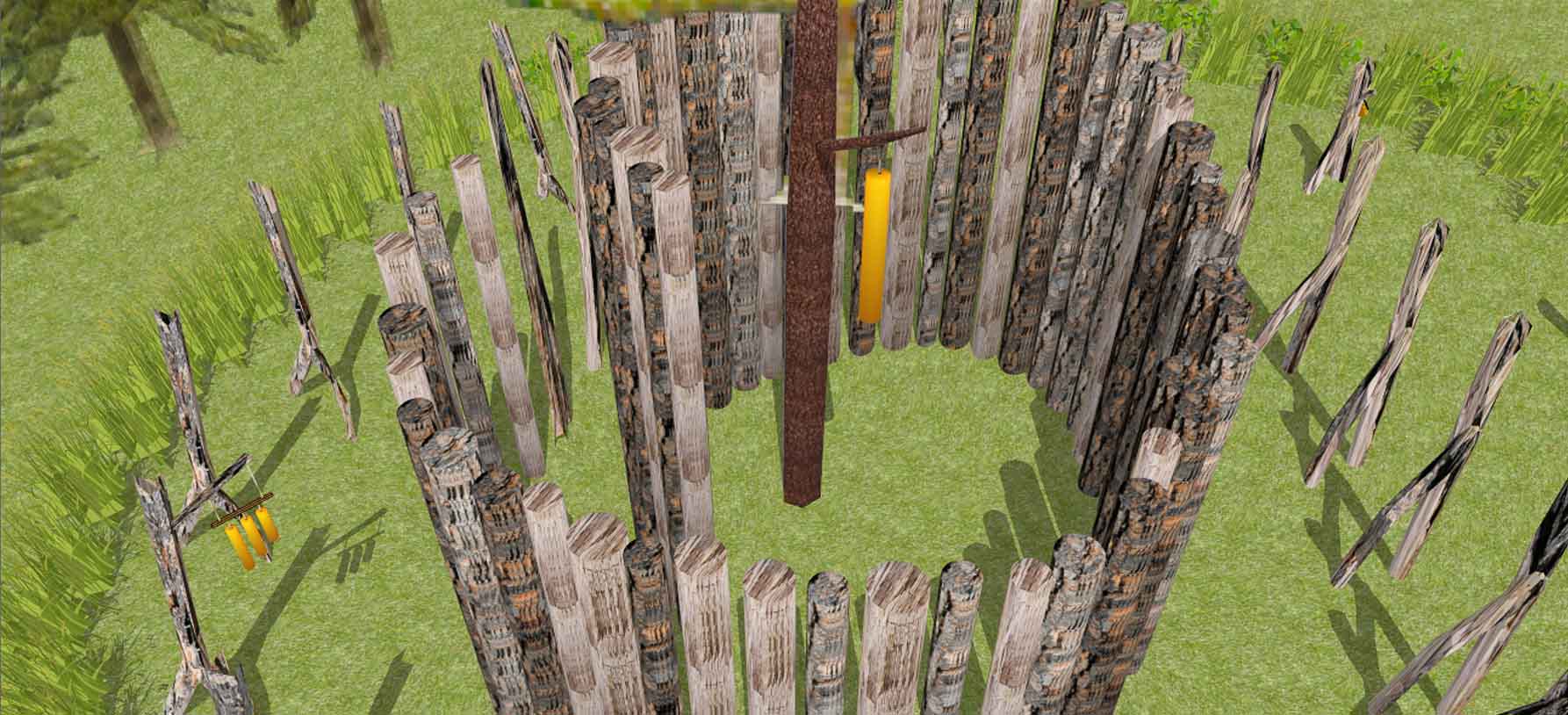Last fall I submitted a proposal to the International Garden Festival at Métis, Quebec as part of a mulit-disciplinary team. The Festival is one of the leading annual garden festivals in the world — a “forum for innovation and experimentation and an exceptional showcase and launching pad for participating designers from a host of disciplines,” to quote the festival website, providing “a unique space for those involved in the renewal of this art form.”
The team I led proposed a garden installation that focused on transformation: from noise to silence, from movement to stillness, from human artifice to the authenticity of nature. The name, Taizé, echoes that of a community in France where participants achieve a contemplative state through music, song and silence.
In the woodland space at Les Jardins de Métis, we wanted visitors to experience a similar transformation as they walked a spiral path downward from a noisy, buzz-filled world to a clearing in the forest in which a quiet harmony was at once promised and withheld.
Along the path, large forked tree branches, inverted to suggest walking figures, held chimes that visitors could play. Initially the music of the chimes was high-pitched and discordant, and as the visitor circled toward the central clearing, the sounds became deeper and more harmonious. In a parallel fashion, the intentionally inverted tree branches gradually changed from shaped trunks that showed the evidence of intention and artifice, to once again become merely … trees.
In the central clearing, closely-spaced tree trunks created a quiet enclosure. Moss and ferns covered the ground around a single living tree. One chime hung from this tree, out of reach of visitors, played only by the wind. Peace promised — and withheld.

This view is looking down into the centre of the clearing, filled with mosses and other natural woodland plants.
A requirement of the submission was to explain how the proposed garden contributed to the renewal of the art of the garden. This is what we wrote:
“Traditionally, gardens were proxies for power and status – beautiful pre-planned creations that marked our separation from nature even as they drew us closer to it. Taizé challenges this historic assumption by using ephemeral materials and ephemeral sounds that are created by nature and by each person who enters. Its “meaning” is not derived from horticultural aesthetics but is contingent on the individual’s spontaneous engagement with a world always in flux.”
This year the Festival received 309 projects from 34 countries, and from them chose five to be added to the garden in 2015. Taizé was not one of the five.
Even so, I was glad to be part of the team that included landscape architects Myke Hodgins and Eric Fleury, writer-photographer Terrence Byrnes, musician Serafin LaRivière and a young architectural technician Alexis Guay, who did the technical drawings.
I benefitted enormously from the experience — if nothing else I learned a lot about how to use computer programs to create drawings that suggest what a project will look like. Collaborating with the members of the team, from conception through to the completed written proposal, demonstrated how different minds can approach an idea, and how the project itself is improved when they do. It was fun. And looking at our submission several months later, I remain pleased with how our project stacks up against the winners.
The new gardens selected for the 2015 edition are:
Around-About by Talmon Biran architecture studio [Roy Talmon, architect & Noa Biran, architect]. Tel Aviv, Israël.
Carré bleu sur fond blanc by o.k. [Kihan Kim, landscape architect & Ophélie Bouvet, landscape architect]. Paris, France.
I like to move it by DIX NEUF CENT QUATRE VINGT SIX Architecture [Mathilde Gaudemet, architect & Arthur Ozenne, architect]. Paris, France.
Popple by Meaghan Hunter, intern landscape architect & Suzy Melo, landscape architect. Winnipeg (Manitoba) Canada.
Se mouiller (la belle échappée) by Groupe A / Annexe U [Jean-François Laroche, architect, Rémi Morency, architect and urbanist, Erick Rivard, architect & Maxime Rousseau, architect]. Québec (Québec) Canada.
The winning projects and the other 300+ submissions can be viewed at http://www.refordgardens.com/english/festival/projets-2015.php
I hope to get to Métis this summer. Why not consider a trip yourself? It’s worth the journey.









There is a lot to this!
Thanks, Robert. It was a lot of work!
I would love to go, it sound like an awesome place.To bad Taize was not chosen, looks like an amazing place. Maybe next time
Métis is an amazing place. I entered the selection process not expecting to win — the competition is incredibly tough — but for the experience of devising a project and working with a team. I’m not sure whether I’ll enter again. It takes a lot of time and energy.